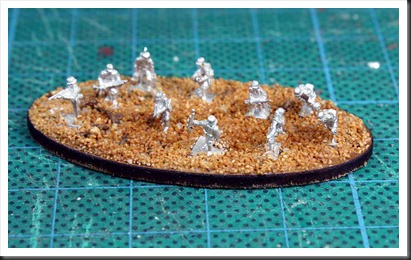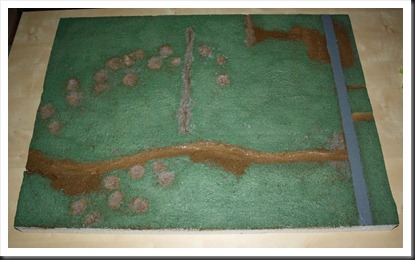I don't know about you, but most of my wargaming projects have a tendency to stop to a grinding halt long before they even get their first test run on the tabletop. Even those few projects that have managed to get to playable state have taken insanely long time for me to complete - my one and only WAB army required more than two years before reaching playable state, while a little more than 20 6mm battalions intended for General de Brigade lingered on my painting table for... oh, let me see if I remember... six years?
These days I am rather painfully aware of the fact that my desire for starting new project is far greater than my ability to actually achieve tangible results. So when I decided to scratch my itch for company level WWII gaming (new version of 'I Ain't Been Shot, Mom' broke my resistance), I decided to take somewhat different approach than in my previous projects and try to stick to the KISS principle. You know, KISS - Keep It Simple, Stupid.
First of all, the scale. Yes, you guessed it - 6mm. Not only will it be quick and simple to build up necessary forces in this scale, but the fact that I already have a bunch of GHQ blisters made this choice rather practical. My first test base looks rather nifty, if I may say so myself.
Second, the terrain. Here I was in a bit of a quandary, because my ultimate goal is to use IABSM3 together with those excellent scenario booklets that Too Fat Lardies also provide. The thing is that those booklets have maps and they are historical. Why is it a problem, you ask? Well, here's where my obsessive compulsiveness raises its ugly head - if a scenario has a historical map, I just must depict it as precisely as possible on the wargaming table. Sorry, can't help it, it's just one of those things.
Fortunately, I do believe that I found a solution for my "problem" - I'll make terrain boards specifically for individual scenarios. This may seem counterintuitive, but it's not... if I keep things simple. Every board will be 80 x 60 centimeter, built from cheap kind of styrofoam and "flocked" with sand and latex wall paint. Test board in the picture took me three hours to make and the cost was about 85SEK (around $12).
Next, the buildings. Simplest possible solution here - home-made stuff made from the cardboard boxes that frozen TV dinners are packed in. Sure, they won't look as nice or durable as those resin buildings from Timecast Models, but they are cheap, take the paint very well and most important of all, they are easy to make.
Finally, the vegetation. Trees aren't much of a problem, since I already have a bunch of them. The main "obstacle" on my way to be able to play my first scenario is the boccage, which is featured prominently in the scenario pack that I will be using. I still haven't decided how to proceed here, but I toy with the idea of using paper mache and Woodland Scenics foliage.




No comments:
Post a Comment